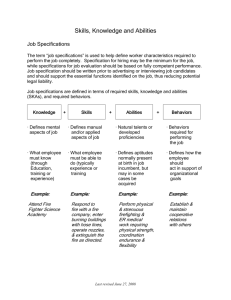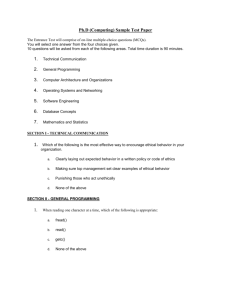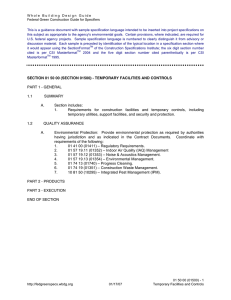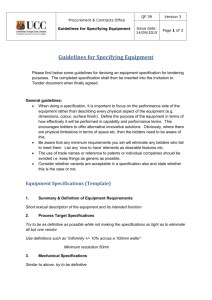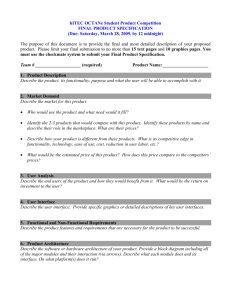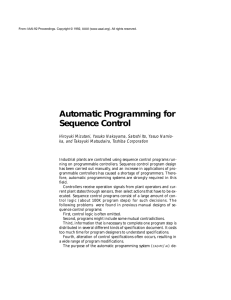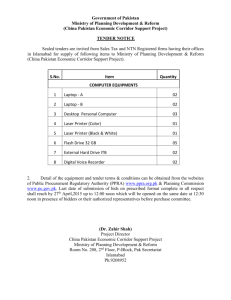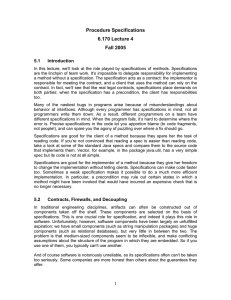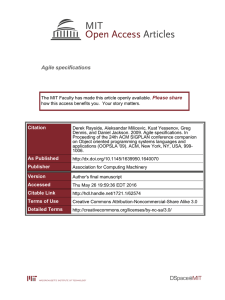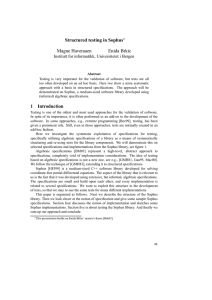EE 484
advertisement
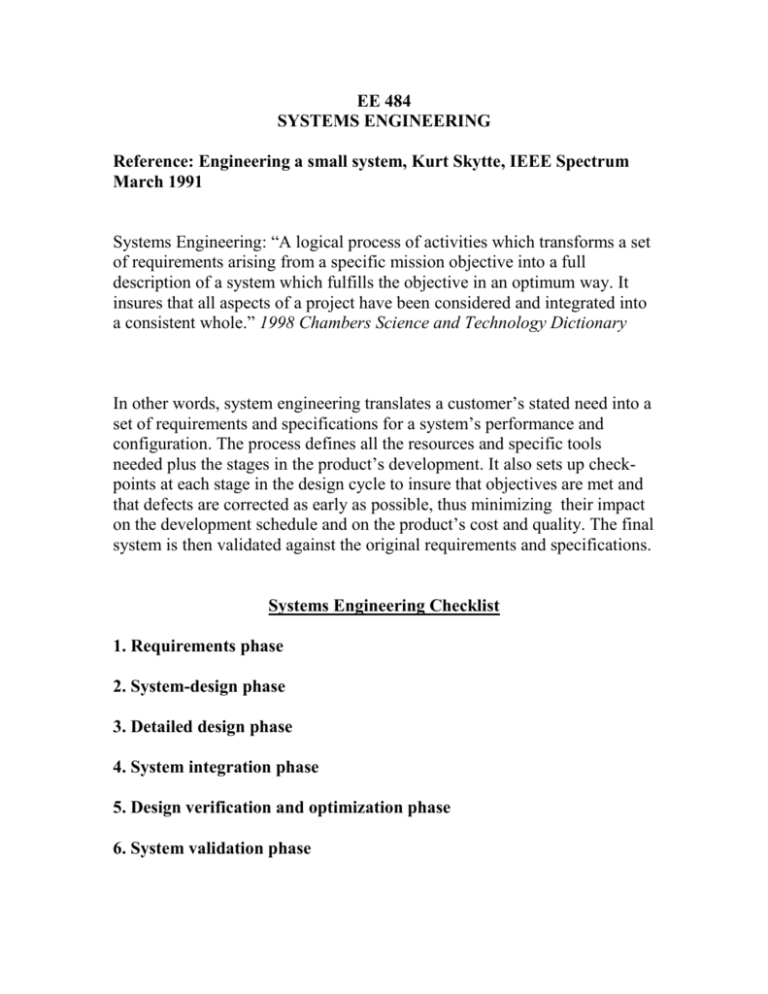
EE 484 SYSTEMS ENGINEERING Reference: Engineering a small system, Kurt Skytte, IEEE Spectrum March 1991 Systems Engineering: “A logical process of activities which transforms a set of requirements arising from a specific mission objective into a full description of a system which fulfills the objective in an optimum way. It insures that all aspects of a project have been considered and integrated into a consistent whole.” 1998 Chambers Science and Technology Dictionary In other words, system engineering translates a customer’s stated need into a set of requirements and specifications for a system’s performance and configuration. The process defines all the resources and specific tools needed plus the stages in the product’s development. It also sets up checkpoints at each stage in the design cycle to insure that objectives are met and that defects are corrected as early as possible, thus minimizing their impact on the development schedule and on the product’s cost and quality. The final system is then validated against the original requirements and specifications. Systems Engineering Checklist 1. Requirements phase 2. System-design phase 3. Detailed design phase 4. System integration phase 5. Design verification and optimization phase 6. System validation phase EE 484 SYSTEMS ENGINEERING Requirements Phase Consult the customer to ascertain a complete understanding of the mission objectives and needs Have the project team take the statement of needs and use it to develop a detailed system level specification describing the system functional requirements System-design phase Develop a system architecture that supports the specified system requirements Develop segment and subsystem level specifications EE484 Requirements/Specifications/Parameters 1.Problem Description(Mission Objectives) Send data collected at a remote site in Maine to the USC campus Send computer data from Boston to Los Angeles See the Super Bowl while cruising on your yacht in the Caribbean Maintain continuous contact with all aircraft flying between Los Angeles and Tokyo Lock and unlock your car from a distance of 30 feet or less(RKE system). 2.System -level design specification The system- level specification defines the details for the total system and for the major segments . Thus a system-level specification defines the system’s architecture in terms of functional segments and their interfaces. 3.Segment-level specifications The segment-level specification contains the following information: a) segment functional requirements b) subsystem definitions c) interfaces 4.Subsystem specifications The subsystem specification contains the following information: a) subsystem functional requirements b) unit or component definitions c) detailed design parameters 5.Unit/component specifications The unit/component specifications contain the following information: a) unit/component performance parameters(e.g. amplifiergain,bandwidth,DC power consumption) b) size and weight c) Environmental operating conditions EE 484 TASK 1 Develop a set of questions to ask the customer(the instructor) to gain a better understanding of the mission objectives Develop a preliminary system specification Develop a candidate system architecture and identify major segments and subsystems Due Dates: 1. First round of questions—1/15/03 2. Major topics/headings in the system specification-1/22/03 3. Develop a strawman system architecture and identify major segments and subsystems-1/22/03 4. Submit system specification and candidate system architecture-no later than 3/12/03

